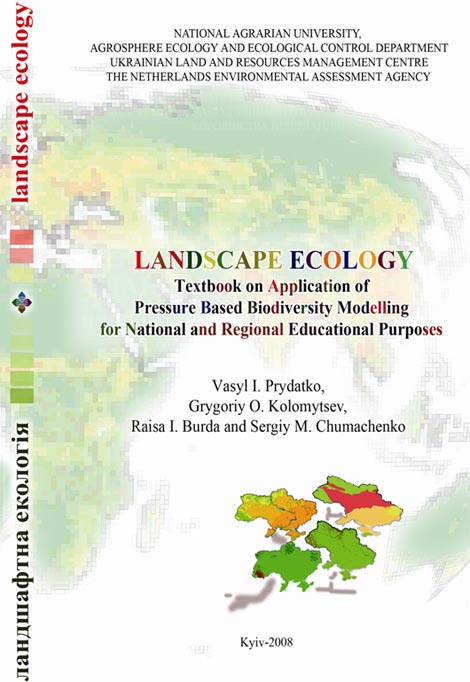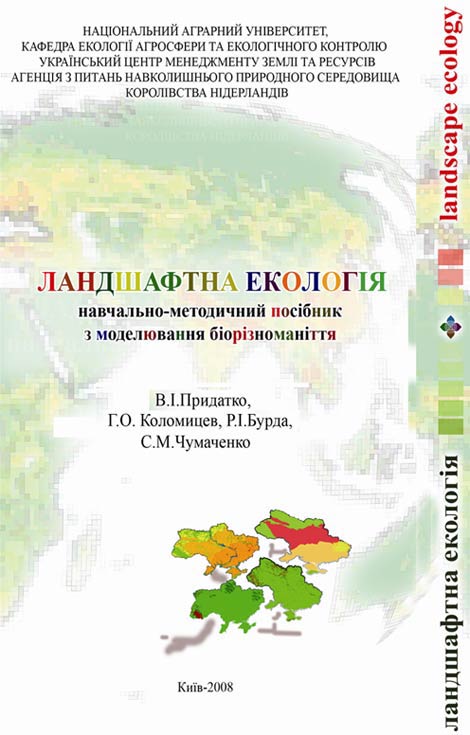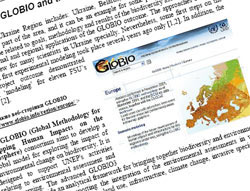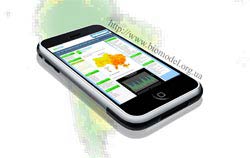“Landscape Ecology: Textbook on Application of Pressure Based Biodiversity Modelling for National and Regional Educational Purposes” Part 1. Biodiversity Modelling: GLOBIO Ukraine Region Case Study. Part 2. Student’s Workbook. Authors: Vasyl I. Prydatko, Grygoriy O. Kolomytsev, Raisa I. Burda and Sergiy M. Chumachenko. — Kyiv: NAU, 2008.—100 pp. Reviewers: Academician of NASU and UAAS, Professor Oleksiy O. Sozinov, and Professor, Dr. (Technical Sciences) Alexander I. Lysenko:  . Титульна сторінка:
. Титульна сторінка:  .
.
CONTENT (draft)
.
 Вступ Що таке GLOBIO та методологія GLOBIO? The biodiversity assessment for the GLOBIO Ukraine Region – MNP Initiatives – The policy context (priorities and actions important for numerous Ukrainian institutions, which are interested in biodiversity) – Key questions to be answered by the biodiversity model important for the the GLOBIO’s Ukraine Region – Goals Підходи до моделювання, їхня апробація та приклади щодо східно-європейського регіону GLOBIO – Моделювання із використанням індикаторів, індексів, ДЗЗ- та ГІС-аналізу (до 2006 року) – Модульна MSA та апробація на території України, Білорусі і Молдови – Моделювання очікуваної моделі MSA при впровадженні різних сценаріїв розвитку. – Моделювання мозаїки класів земної поверхні з CLUE-s, сценарії розвитку Рекомендації щодо використання моделювання в учбовому процесі (на прикладі України) – Рекомендації щодо використання моделювання в учбовому Процесі
Вступ Що таке GLOBIO та методологія GLOBIO? The biodiversity assessment for the GLOBIO Ukraine Region – MNP Initiatives – The policy context (priorities and actions important for numerous Ukrainian institutions, which are interested in biodiversity) – Key questions to be answered by the biodiversity model important for the the GLOBIO’s Ukraine Region – Goals Підходи до моделювання, їхня апробація та приклади щодо східно-європейського регіону GLOBIO – Моделювання із використанням індикаторів, індексів, ДЗЗ- та ГІС-аналізу (до 2006 року) – Модульна MSA та апробація на території України, Білорусі і Молдови – Моделювання очікуваної моделі MSA при впровадженні різних сценаріїв розвитку. – Моделювання мозаїки класів земної поверхні з CLUE-s, сценарії розвитку Рекомендації щодо використання моделювання в учбовому процесі (на прикладі України) – Рекомендації щодо використання моделювання в учбовому Процесі  – Блог BioModel, як довідковий інтерактивний інструмент Summary Acknowledgements Annexes References There was published the “Landscape Ecology: Textbook on Application of Pressure Based Biodiversity Modelling for National and Regional Educational Purposes. Part 1. Biodiversity Modelling: GLOBIO Ukraine Region Case Study. Part 2. Student’s Workbook. In a convenient format for self-study and self-testing for the first time for Ukrainian higher educational institutions the bilingual textbook (English-Ukrainian) provides the history of the issue, approaches and examples of thematic mapping-oriented modelling of the expected biodiversity taking into account the impacts on it within the context of GLOBIO Ukraine Region. It is based on rich groundwork of both national and foreign schools of modern landscape ecology, in their comparison. GLOBIO approaches are revealed for Ukrainian ecologists for the first time. The textbook also provides such approaches to biodiversity modelling as MSA, CLUE, EEBIO, LCCD_Bio, RS-GIS in terms of the region that are still little known to Ukrainian ecologists. After each unit there are questions for progress testing. In annexes, there are testing assignments and answer keys as well as examples of topics for independent, bachelor’s and master’s degree papers. The issue has a list of 169 sources of information, which will ease the use of testing assignments and will be a good resource for further self-study of future ecologists. The textbook is also a contribution to the development of bioticgeoinformation science as a new trend in ecology. The book is recommended by Training and Methodology Council of Ecology and Biotechnology Faculty of NAU, submitted by Agrosphere Ecology and Ecological Control Department of NAU. The book is published with the assistance of ULRMC, funded by «Development and publishing the bilingual training package on application of pressure based biodiversity modelling for national and regional educational purposes» Project according to the Contract between the Netherlands Environmental Assessment Agency (MNP, Bilthoven) and the ULRMC. Translated by L. Atonyak and T. Syzonenko with participation of V.Prydatko. Authors and department lecturers express their gratitude to Mr. Ben ten Brink (MNP) and Mr.T.Tekelenberg (MNP) – for their kind assistance in the project research and implementation, Mr. Wilbert van Rooij (MNP) and MNP team, the representatives of International Institute for Geo-Information Science, and Earth Observation (ITC) – for methodological support and organizing training of Ukrainian ecologists in the Netherlands in 2007. A version of the book in pdf-format on request. Some drawings are available at the author’s web-page ArctArt.
– Блог BioModel, як довідковий інтерактивний інструмент Summary Acknowledgements Annexes References There was published the “Landscape Ecology: Textbook on Application of Pressure Based Biodiversity Modelling for National and Regional Educational Purposes. Part 1. Biodiversity Modelling: GLOBIO Ukraine Region Case Study. Part 2. Student’s Workbook. In a convenient format for self-study and self-testing for the first time for Ukrainian higher educational institutions the bilingual textbook (English-Ukrainian) provides the history of the issue, approaches and examples of thematic mapping-oriented modelling of the expected biodiversity taking into account the impacts on it within the context of GLOBIO Ukraine Region. It is based on rich groundwork of both national and foreign schools of modern landscape ecology, in their comparison. GLOBIO approaches are revealed for Ukrainian ecologists for the first time. The textbook also provides such approaches to biodiversity modelling as MSA, CLUE, EEBIO, LCCD_Bio, RS-GIS in terms of the region that are still little known to Ukrainian ecologists. After each unit there are questions for progress testing. In annexes, there are testing assignments and answer keys as well as examples of topics for independent, bachelor’s and master’s degree papers. The issue has a list of 169 sources of information, which will ease the use of testing assignments and will be a good resource for further self-study of future ecologists. The textbook is also a contribution to the development of bioticgeoinformation science as a new trend in ecology. The book is recommended by Training and Methodology Council of Ecology and Biotechnology Faculty of NAU, submitted by Agrosphere Ecology and Ecological Control Department of NAU. The book is published with the assistance of ULRMC, funded by «Development and publishing the bilingual training package on application of pressure based biodiversity modelling for national and regional educational purposes» Project according to the Contract between the Netherlands Environmental Assessment Agency (MNP, Bilthoven) and the ULRMC. Translated by L. Atonyak and T. Syzonenko with participation of V.Prydatko. Authors and department lecturers express their gratitude to Mr. Ben ten Brink (MNP) and Mr.T.Tekelenberg (MNP) – for their kind assistance in the project research and implementation, Mr. Wilbert van Rooij (MNP) and MNP team, the representatives of International Institute for Geo-Information Science, and Earth Observation (ITC) – for methodological support and organizing training of Ukrainian ecologists in the Netherlands in 2007. A version of the book in pdf-format on request. Some drawings are available at the author’s web-page ArctArt.



0 Comments